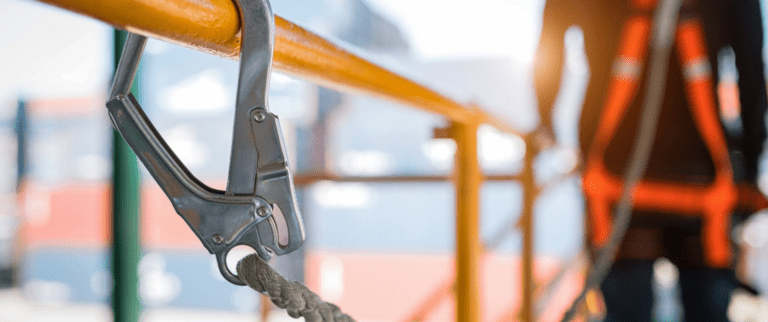November 12,2024
Why Should One Use Fall Protection Systems?

A trip, a jerk, a fall can change your life forever. Surprised?
Statistical evidence tells us that falls are one of the most common causes of serious work-related injuries and deaths. So, it is inevitable that we practice precautions in any given circumstance to avoid mishaps.
Some of the most common outcomes of an unfortunate fall are broken bones, cuts and bruises, loss of consciousness, internal organ damage and in very serious cases, death. Falls pose an emotional and economic burden both on the organization and the worker.
Now, this brings us to an important question, when should one make use of fall protection systems?
Irrespective of which sector/industry you belong to, make sure that there are necessary fall protection systems in place if your work exposes you to an elevation of 6 feet or more. There are many international safety guidelines provided by the Occupational Safety and Health Administration (OSHA) and other such regulatory bodies, which emphasize the usage of fall protection systems to mitigate risks.
Some of the most common workplace scenarios that require the use of fall protection systems involves:
• Suspended work platforms,
• Mobile elevating work platforms,
• Forklift platforms,
• Rope access platforms,
• Overhead lifeline systems,
• Scaffoldings systems
And any other machinery/equipment that would expose the personnel to higher elevations.
There are different types of fall protection systems that one can use depending on the application. Broadly, fall protection systems are classified into active and passive systems.
Passive fall protection systems are those that do not require human intervention after the installation. Examples of these include guard rails, barricades, and netting. Coming to active fall protection systems, these require to be operated/handled by the workers. As in, they need to make a conscious choice of using these fall protection systems and should use them properly for maximum safety. Fall arrest systems and fall restraint systems are the best examples of this.
Further, these active and passive fall protection are grouped into four major types based on how they prevent injuries.
First is Fall Elimination. This is the most common form of passive protection. It emphasizes reducing the risk of fall by avoiding working at heights unless it is crucial. However, this cannot always be applicable, since there are work scenarios that will require the employee to work from elevations.
Second is Fall Prevention. Cases in which working at heights cannot be eliminated, the best possible protection strategy to prevent the fall is using appropriate passive systems (like guardrails, barricades) and active systems (like safety harnesses). Necessary fall prevention systems are to be installed in and around elevated locations, open holes, and dangerous machinery as per OSHA standards to minimize workplace dangers.
The next type of fall protection is the use of Fall Arrest Systems. This is an active fall protection system which prevents the worker from instantly hitting the ground after the fall. Fall restraint systems consist of multiple components like a harness, safety lanyard which is also called a self-retracting life, and one or many anchor points.
The final one is the Fall Restraint Systems. This is again an active fall protection system, which might consist of similar components as that of fall arrest systems, which however might differ in terms of functionality. The most significant differentiating factor in fall restraint system is that these systems stop the fall from occurring rather than stopping the fall after it has occurred. This is accomplished by having a shorter lanyard or a lifeline such as a vertical, horizontal or overhead lifeline system which prevents the employees from being exposed to the risk of falling along the edges and gaps in the elevated surface.
How does the Overhead Lifeline System enhance safety in logistics?
The Overhead Lifeline System enhances safety in logistics by providing a secure anchoring point for workers, reducing the risk of falls during tasks such as loading, unloading, and vehicle maintenance. This system allows for safe movement along a fixed path, protecting workers and securing goods during transport, which is crucial for maintaining high safety standards in logistics operations.
Fall protection lifeline systems play a pivotal role in ensuring the safety of workers operating at elevated heights. By investing in the right lifeline system and adhering to safety protocols, employers can create a secure work environment that minimizes the risk of falls and promotes employee well-being. Remember, when working at heights, safety should always come first.